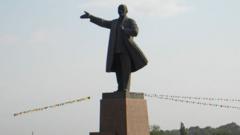As the bustling streets of Copenhagen bear witness to generations past, the legacy of Nella Larsen, a prominent figure in the Harlem Renaissance, remains etched in the city’s atmosphere. Known for penning “Quicksand,” a pivotal novel published in 1928 about a mixed-race woman's quest for identity, Larsen's journey began much earlier in the vibrant capital of Denmark, where she lived during her formative years.
Her character, Helga Crane, encapsulates the mixed-race experience in Copenhagen—a subject that resonated deeply with Larsen herself. In her novel, she wrote about the stares and curiosity that Helga faced, a phenomenon not unlike that of Larsen's real-life experiences navigating the complexities of her identity. Today, the landscape of Copenhagen has shifted, with a significant increase in immigrant populations from Africa and the Middle East, yet many of the locales depicted in “Quicksand” remain unchanged.
The city’s renowned cyclists still weave seamlessly through its charming streets, a sign of daily life that Helga would have come to recognize. In 2023, Copenhagen was named UNESCO's World Capital of Architecture, reflecting its commitment to preserving a harmonious blend of history and modernity. This dichotomy is palpable; as tourists and locals traverse the same streets that Larsen once roamed, they unknowingly tread upon the complex narrative of her life and work.
While Larsen's writings were often inspired by her experiences, her own life remains somewhat enigmatic—her initial years spent in a working-class Chicago neighborhood, followed by time in Denmark, framing her complex cultural identity. With a Danish mother and a father from the Danish West Indies, her upbringing was a tapestry of multiple influences, leaving an indelible mark on her creativity.
Though Larsen's career faced setbacks, her talent was recognized by literary giants of her time, including W.E.B. DuBois, who heralded "Quicksand" for its depth and insight. While Larsen's contributions may have initially faded from the public eye, the rich tapestry of her experiences in both Denmark and America underscores the cultural dialogues of race and identity that continue to resonate today.
Reflecting on Larsen's legacy invites contemporary readers to explore her literary contributions while retracing the footsteps she took in Copenhagen—a city that still stands witness to her profound impact on literature and cultural identity.






















